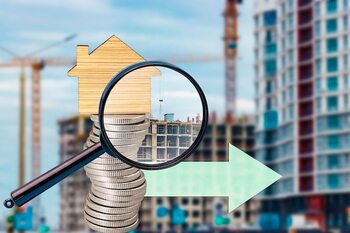The connection between social welfare and real estate value appreciation

The connection between social well-being and real estate appreciation is a crucial topic in the development of our communities. In Costa Rica, where quality of life and social harmony are fundamental pillars, understanding how these elements intertwine can be key for those looking to invest in properties. As areas prosper socially, their real estate value tends to increase, creating a virtuous cycle that benefits both residents and investors. Let’s explore how cultivating a healthy environment can be a winning strategy for all.
The importance of social fabric in property valuation
The social fabric of a community plays a fundamental role in property valuation, as it refers to the connections, interactions, and relationships among the individuals that make it up. An environment where trust, mutual respect, and collaboration prevail translates into a sense of belonging and security for its inhabitants. When people feel integrated and supported by their surroundings, they are more likely to invest in improvements to their homes and actively participate in the development of the area. This social cohesion not only enhances the quality of life but also attracts new residents and investors looking for a place with a dynamic and healthy community, which increases real estate demand.
Additionally, the social fabric directly impacts the services and resources available within a community. Areas with strong social cohesion often have better schools, recreational spaces, and efficient community services. These factors are highly valued by families when deciding where to live, which in turn drives interest in local properties. As the community strengthens and improves its social infrastructure, property values tend to increase, creating a positive cycle where both homeowners and investors benefit. Thus, cultivating a robust social environment is not only beneficial for those who reside there; it is also key to maximizing the economic potential of the real estate area.
2. Cohesive communities: a magnet for buyers
Cohesive communities are an undeniable attraction for buyers in the real estate market. When people perceive that they live in an environment where collaboration and mutual support are the norm, their desire to invest in that area increases significantly. Friendships, support networks, and community activities foster a sense of belonging that not only enhances the quality of life for residents but also elevates the neighborhood's profile to potential buyers. This positive perception translates into higher demand and, consequently, an increase in property values.
Additionally, well-cohesive communities are often accompanied by adequate services and infrastructure that enhance their appeal. Access to quality schools, recreational spaces, and cultural projects are just a few examples of what a healthy community can offer. These characteristics not only ensure a better quality of life for current residents but also attract those looking to settle in places where they can enjoy these advantages. Consequently, by fostering a united and vibrant community, a positive cycle is created: more investments drive continuous improvements, which in turn attracts more buyers interested in being part of that enriching experience.
3. How public spaces promote well-being and increase property value
Public spaces play a fundamental role in creating healthy and cohesive communities. Parks, plazas, and recreational areas not only provide a place for leisure but also encourage social interaction among neighbors. These interactions contribute to the sense of belonging and community, which in turn enhances the quality of life for residents. An environment where people feel connected to each other tends to be safer and more appealing, which can positively influence potential buyers' and tenants' perceptions of the area.
Moreover, the presence of well-designed and maintained public spaces can significantly increase the real estate value of an area. Buyers are often willing to pay more for properties close to parks and green areas, as these spaces not only beautify the neighborhood but also promote active and healthy lifestyles. Thus, an investment in public infrastructure can result in a direct increase in real estate appreciation, benefiting both current homeowners and future investors interested in capitalizing on the area's growth.
4. Social factors that influence added value: education, security, and health
The value of a property is not only measured by its location or physical characteristics but also by the social environment surrounding it. Factors such as education play a fundamental role in this aspect; communities with access to good schools and educational programs tend to attract families and professionals who value personal and academic development. This demand increases interest in local properties, raising their prices and generating a positive effect on the area's economy. Investing in education is, therefore, investing in the real estate future of a community.
Safety is another critical aspect that directly influences the added value of properties. A safe environment not only provides peace of mind to residents but also attracts new buyers and tenants. Areas where effective security measures are implemented often see an increase in their real estate value due to the desire to live in a place where one feels protected. Additionally, a safe community fosters healthier social interactions, which contributes to overall well-being and further enhances the attraction for investors.
Finally, access to adequate healthcare services is essential for social well-being and has a significant impact on real estate value. Communities with accessible hospitals and medical centers not only ensure the health of their residents but also increase their appeal to potential buyers. A healthy population is more productive and better equipped to contribute to the economic development of the area, which translates into a sustained increase in the value of local properties. By prioritizing these social factors, communities can create prosperous environments where everyone benefits.
5. The role of community initiatives in sustainable urban development
Community initiatives play a crucial role in sustainable urban development, as they encourage active participation of residents in decision-making that affects their environments. These actions not only strengthen social cohesion but also promote responsible and sustainable practices that enhance quality of life. Projects like urban gardens, recycling programs, and cultural activities not only beautify public spaces but also generate a sense of belonging among residents. As communities engage in their own development, a positive dynamic is created where social well-being translates into an increase in property value.
Additionally, community initiatives can attract investments by demonstrating to potential buyers and investors a collective commitment to sustainable development. Areas where residents work together to improve their environment are often more appealing to those seeking properties, as they reflect a safe and vibrant atmosphere. Collaborative projects not only generate real estate appreciation through the physical enhancement of the area, but also promote a culture of sustainability and shared responsibility. Therefore, by supporting these community initiatives, both citizens and investors create an enriching cycle where economic growth goes hand in hand with social well-being.
6. Testimonials: successful experiences from neighborhoods with high appreciation
A clear example of how social well-being influences real estate appreciation is observed in neighborhoods that have implemented community initiatives. In various locations, residents have worked together to improve safety, promote cultural activities, and establish green spaces. These efforts have not only created a sense of belonging and cohesion among neighbors but have also attracted new investors. Properties in these areas have seen a significant increase in their value, demonstrating that when a community comes together for the common good, everyone benefits economically.
Another striking testimony comes from neighborhoods where education and access to basic services have been prioritized. By developing educational programs and accessible health centers, these places have not only improved the quality of life for their residents but have also managed to attract young families seeking a favorable environment to raise their children. This demographic flow has driven investments in real estate, thus increasing the area's value. Experience shows that investing in social well-being is a smart strategy for those looking to maximize their economic return without neglecting social responsibility.
7. Public policies that promote social welfare and their impact on the real estate market
Public policies that promote social welfare play a fundamental role in the appreciation of real estate properties. By implementing initiatives that improve access to essential services such as education, health, and transportation, governments can transform vulnerable areas into prosperous communities attractive for investment. For example, the creation of safe public spaces, parks, and recreational areas not only enhances the quality of life for residents but also increases the demand for housing in those areas. This results in an appreciation of real estate value, benefiting both current homeowners and those looking to invest in the future.
Additionally, policies that promote social inclusion and sustainable development can significantly enhance the appeal of a specific area. The implementation of programs that encourage citizen participation and community cohesion generates a sense of belonging among residents, which is a key factor in attracting new tenants and investors. Communities with a strong social network tend to be more resilient to economic crises or market changes; this translates to stability and sustained growth in property values. Therefore, by prioritizing social well-being through effective public policies, a positive cycle is established where all actors in the real estate market benefit.
8. Strategies to improve coexistence and enhance the appreciation of your community
Coexistence in a community can be enhanced through various strategies that promote interaction and a sense of belonging among neighbors. One of the most effective is the organization of community events, such as fairs, workshops, or sports activities, where residents can meet and share experiences. These initiatives not only strengthen social ties but also create an environment conducive to cultural exchange and collaboration on common projects, which positively impacts the perception of the neighborhood and its added value.
Another essential strategy is to promote well-designed and maintained public spaces. Parks, squares, and recreational areas are fundamental for social well-being, as they provide places where families can gather and enjoy the outdoors. Investing in these spaces not only improves the quality of life for residents but also attracts new inhabitants and investors, thus increasing the real estate value of the area. Furthermore, encouraging sustainable practices within these spaces helps to create a collective environmental awareness that further strengthens the social fabric within the community.
9. Future of social welfare and its relationship with real estate sector trends
The future of social well-being is intrinsically linked to emerging trends in the real estate sector. As communities seek to improve their quality of life, there is a growing interest in spaces that promote sustainability, health, and social cohesion. Housing projects that integrate green areas, community services, and accessible transportation options not only benefit residents but also increase the value of properties. Investors and developers are beginning to recognize that investing in social well-being is not just an ethical responsibility but a smart strategy to maximize the value of their assets.
The shift towards a more holistic approach to urban development presents valuable opportunities in the real estate sector. Current trends indicate a move towards inclusive design that prioritizes the mental and physical well-being of residents. Spaces like parks, recreational centers, and well-planned commercial areas encourage social interaction and create a sense of belonging among neighbors. This not only leads to an improvement in quality of life but also a steady appreciation of properties in those areas. In this context, investors should consider how their decisions can positively impact both their profitability and the overall health of the communities where they operate.



